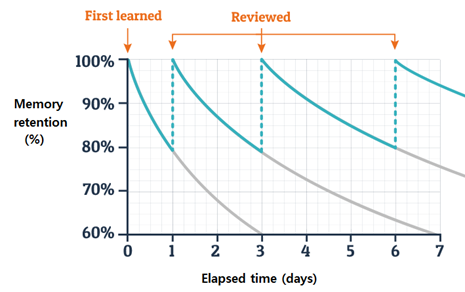Home Learning
At Hungerhill School, we recognise and value the contribution that learning in the home environment can make to a young person's education. We strongly believe that it is one of the key mechanisms through which we can help students achieve their full potential. It is therefore an expectation that all teachers set appropriate home learning and that the school works in partnership with parents/carers and students to ensure that it is embedded in the learning culture of the school.
Home learning is a key component of the curriculum provision at Hungerhill because there is a strong link between home learning and educational achievement. The completion of home learning can increase the time available for study by nearly 25%: over a five-year period, this can be equivalent to at least one additional year of full-time education.
The Hungerhill home learning policy is built around the importance of retrieval to embed the knowledge and skills students learn in lessons.
“Retrieval practice is where we focus on getting the information out.”
Ebbinghaus’ forgetting curve (below) shows that when you first learn something, the information disappears at an exponential rate, i.e. you lose most of it in the first couple of days. It also shows that the more times you revisit and review learning, the better you will remember it and commit it to long term memory. Through the act of retrieval, students’ memory for information is strengthened and forgetting is less likely to occur.

Home learning is set by teachers every 2-5 lessons and all home learning tasks are set through Class Charts.
Examples of the kinds of home learning happening around school include.
- Seneca – A complete learning platform where students revisit key areas then test their understanding with a quiz.
- Exampro – With exampro students have access to a vast array of past exam questions and mark schemes that are marked for them automatically.
- Sparx – An all-in-one home learning platform for Maths where students practice the maths covered in class.
- Microsoft forms quizzes – These are designed to get students to continuously revisit content.
- Extended writing tasks – These are used to help students consolidate what they have covered in class and helps to improve their writing skill level.
- Paper-based tasks – In some subjects, paper-based tasks are given to students to encourage students to continuously revisit content and enhance understanding.
Class Charts
All homework is placed on Class Charts by the class teacher. (apart from Maths)*. Students can access Class Charts 24/7 on their phones, tablets, or computers. If the Class Charts app is downloaded, students will receive notifications of new homework.
*Maths homework can be accessed in a similar way via Sparx.
Parents also have their own area on Class Charts where homework for their child can be observed and reviewed for each subject. We ask for the support of parents/carers in checking your child’s homework on Class Charts to encourage them to keep on top of the home learning tasks they have been set.
+5 points will be awarded to all students that complete a piece of homework. These positive points can be viewed on Class Charts by both students and parents. Students who go above and beyond with their home learning will be recognised through rewards during form time and assembly on a half termly basis. Some departments also have their own reward systems for this which include post cards/phone calls home and prize draws.
If home learning is not completed and submitted by the deadline, students will be issued with -3 points on Class Charts and their home learning effort will be reflected in their attitude to learning grades. Ongoing concerns about repeated non-completion will be followed up by teachers with a phone call to parents/carers. Students who repeatedly do not complete home learning can be referred to the home learning support sessions as detailed below.
All students should be able to have access to home learning. As many tasks are now online homework support sessions are run daily from 15:10 – 15:40 in the library. This gives students access to a computer where they can check their homework on class charts and complete it if required.
As an additional reward, students will get 5 credits for the class charts shop if they complete a piece of homework. However, they will lose 3 credits if they fail to complete a piece of homework. Students can save up these credits and use them to buy anything from chocolate to Chromebooks at set times of the year.

